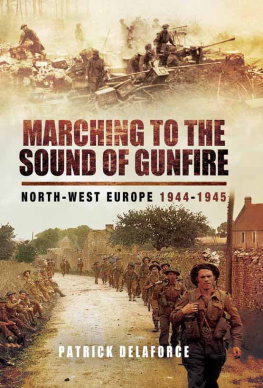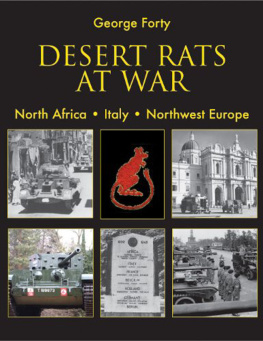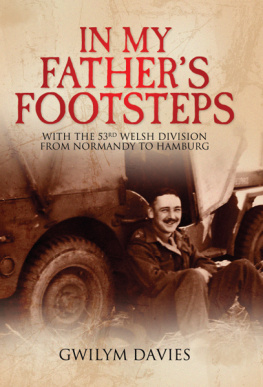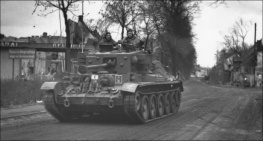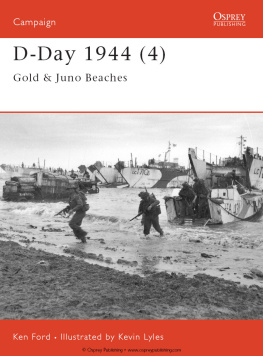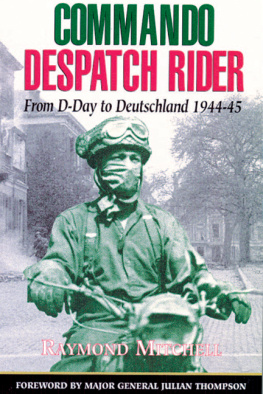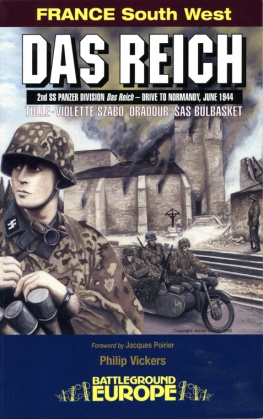RED CROWN AND DRAGON
53rd Welsh Division in North-West Europe,
1944-1945
Patrick Delaforce
First published by Tom Donovan Publishing Ltd. in 1996
Copyright Patrick Delaforce 1996
This edition published in 2020 by Lume Books
30 Great Guildford Street,
Borough, SE1 0HS
The right of Patrick Delaforce to be identified as the author of this work has been asserted by them in accordance with the Copyright, Design and Patents Act, 1988.
All rights reserved. No part of this publication may be reproduced, stored in a retrieval system, or transmitted in photocopying, recording or otherwise, without the prior permission of the copyright owner.
Table of Contents
Order of Battle
(Infantry)
53rd Welsh Division 1944-45
71st Infantry Brigade
1 Highland Light Infantry
1 Oxfordshire & Buckinghamshire Light Infantry
1 East Lancashire Regiment
158th Infantry Brigade
4 Royal Welch Fusiliers
6 Royal Welch Fusiliers
7 Royal Welch Fusiliers
160th Infantry Brigade
4 Welch Regiment
1/5 Welch Regiment
2 Monmouthshire Regiment
Support Battalion
1 Manchester Regiment
Introduction
Amongst the half dozen British divisions who trained and exercised for nearly four-and-a-half years in WWII, before being flung into the cauldron of the Normandy beachhead battles was 53rd Welsh Division.
When Field Marshal Sir Bernard Montgomery was presented with the Freedom of the Borough of Newport shortly after the end of hostilities he declared: 53 Welsh Division has been and is, one of my best divisions. And General Dempsey, the British Second Army Commander, said of the division after the Reichswald and Rethem battles: You fought like tigers against the best German troops on the whole front.
Under their GOC, Major General Bobby Ross CB, DSO, MC they fought almost non-stop for ten months, suffered 10,000 battle casualties and gained a fine Victoria Cross in Normandy. At the outbreak of war the three Brigades were of course embodied in Wales. 158 (North Wales) Brigade at Wrexham, 160 (South Wales) Brigade at Cardiff and 159 (Welsh Borders) Brigade at Hereford. The latter subsequently became the infantry brigade of the authors 11th Armoured Division.
The Royal Welch Fusiliers had three battalions in 158 Brigade, (4th, 6th and 7th), but also formed the 71st Anti-tank Regt RA (RWF) and the 116th (RWF) Light AA Regt RA. The Welch Regiment had two battalions (4th and 1/5th) in 160 Brigade, with 2nd Bn the Monmouthshire Regiment as their third battalion.
In late 1943 71st Brigade joined the Division and was nicknamed the Foreign or International Brigade, being made up of 1st Bn Highland Light Infantry (from Glasgow), 1st Bn Oxfordshire & Buckinghamshire Light Infantry and 1st Bn East Lancashire Regiment.
The medium machine guns and heavy mortars of the 1st Manchesters, the three Field Regiments RA (81st, 83rd and 133rd) provided an awesome artillery support.
On their way to Hamburg, the Red Crown and Dragon Division gained many battle honours including Evrecy, s-Hertogenbosch, the Ardennes, the Reichswald and the several German river battles.
This book is dedicated to the memory of the many young soldiers of the Division who fell in battle in France, Belgium, Holland and Germany in the final campaign of WWII.
Early History
The Great War
The role of the 53rd Division in WWI is admirably chronicled in Major C H Dudley Wards history published in 1927. From 1915 to 31st October 1918, the Welshmen fought, not the Germans, but their tough rugged Turkish allies (often officered by Germans). They fought in the savage doomed campaign known as the Immortal Gamble of Gallipoli. Small pitched battles were fought at Lala Baba, Chocolate Hill, Anafarta and Scimitar Hill. In 1916 they reformed in Egypt and for the next two years fought in Palestine. They marched across the Sinai Desert from Kantara on the canal to Gaza. Two pitched battles fought in March and April were unsuccessful. General Allenby then took command of the Egyptian Expeditionary Force. When 158 Brigade stormed the heights of Khuweilfeh on 5th November, 52 Lowland and 54 East Anglia Divisions finally captured Gaza. Then the Welshmen helped capture Jerusalem on 9th December 1917. The following year they eventually seized Chipp Hill, a key height in Judea and then crossed the river Jordan. Throughout 1918 they fought in the Jordan valley. When the Turkish Armistice was signed on 31st October they returned to Kantara and Alexandria. The campaigns in Palestine were fought in intense heat and the dreaded scorching wind the Khamsin forced temperature up to 130 degrees in the shade. J N Mores Dug-out Doggerel:
Yes! Such is the Khamsin, dreaded breeze
With the heat of Hell as its brother
O! Merciful God, we would rather freeze
Than pant in the throes of another!
Water was scarce, often brackish, and was rationed to half a gallon per man per day. The Turks, commanded by skilled German Generals, often with defensive lines of prickly pear cactus, were a formidable foe.
*
The Limbo Years: 1939
The unusual divisional sign was devised by Major General B N Wilson CB, DSO, who commanded on mobilisation in 1939. It took the form of a red W, the base of the letter resting on a horizontal bar. On transport the W was shown on a green background while on uniform it was on a khaki background. Brigades were allocated one (158) two (159) or three bars (160 Brigade). The badge not only stood for Wales but was symbolic of a Bardic Crown. Major General Wilson said That is a Welsh Crown. Bobby Ross, who took the Division to Normandy in 1944 promised that he would never alter the sign. Once it came under fire in France its retention was certain.
*
Shortly after the outbreak of war the 2nd Bn Monmouthshires were in Caerphilly and 200 other ranks from the mining valleys went back to work in the mines as part of the national industrial needs. They were replaced by a huge draft of London Cockneys. By the 20th September, the Division was providing a thousand harvesters per day throughout Wales and on 9th October, 83rd Field Regt was deployed to seek and destroy a German U-boat reputedly ashore near Barry - which it wasnt!
Wallace Brereton did his basic training late in 1939 at Oswestry and later recalled:
Gorseinon is a small industrial town in South Wales. I had never heard of it before. Now based there was the 81st (Welsh) Field Regt RA, an old-established formation originally known as the Glamorgan Yeomanry. For many years it had provided comradeship, fresh air and paid holidays for the young miners from the valleys. Now it had to be modernised and brought up to strength for the given task ahead. This was to be my unit for the next six years. The billets were atrocious. We slept on the floor of a very dirty and neglected church hall. But the Welsh boys were extremely friendly and gave us a genuine warm welcome, sharing their food parcels, mainly of Welsh cakes. Many of the boys were related. It was amusing to see a sergeant major giving a gunner a hard time, then to find out that they were brothers. Many of them had only to hop on the local bus to reach home and then get back in time for evening roll-call.
Ned Petty joined the Army in October 1939. In Brampton barracks at Chatham:
we found hundreds of chaps like us there, just in our civilian clothes. It was a collecting point - most of them were tradesmen. After breakfast we all queued up and were given a slip of paper. All that was on my slip was the number 53. Some chaps said that they had 51, 50 or 49. We were afterwards told that that was the number of the Division we were going to. We didnt know what a division was sixty or seventy of us went to Narbeth in South Wales posted to 244 Field Coy Royal Engineers, 53rd Welsh Division. There were four Engineer companies to a division. A field company consisted of four sections, approximately 40 men to a section. I was posted to No. 2 Section. After two or three days we were issued with an overcoat, a rifle and a steel helmet. At least this was a start. We still wore our suits and our own shoes, of course! After Christmas we moved to Nayland, near Pembroke Dock. My section was again in the crypt of a chapel on a hill.


